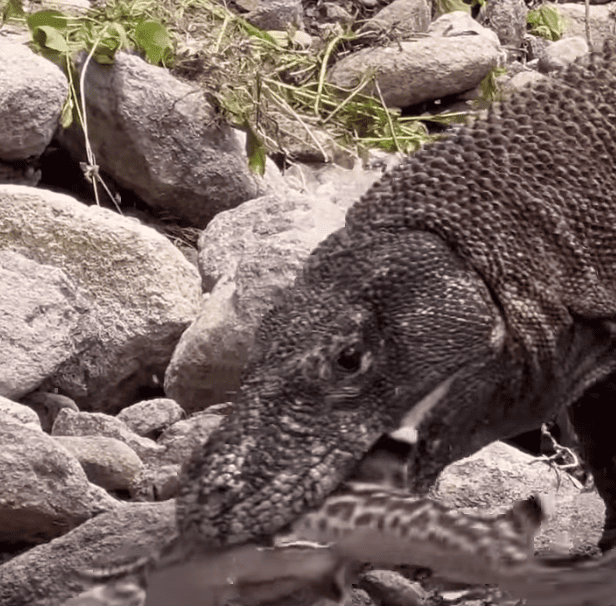In a rare display of nature’s ferocity, a Komodo Dragon has been caught on camera devouring a shark alive. This remarkable footage provides a glimpse into the incredible capabilities of one of the world’s largest and most formidable reptiles. In this article, we’ll explore the physical characteristics and behavioral traits that make the Komodo Dragon such a fascinating and fearsome predator.
Lets explore the physical characteristics of the Komodo Dragon…
Impressive Size
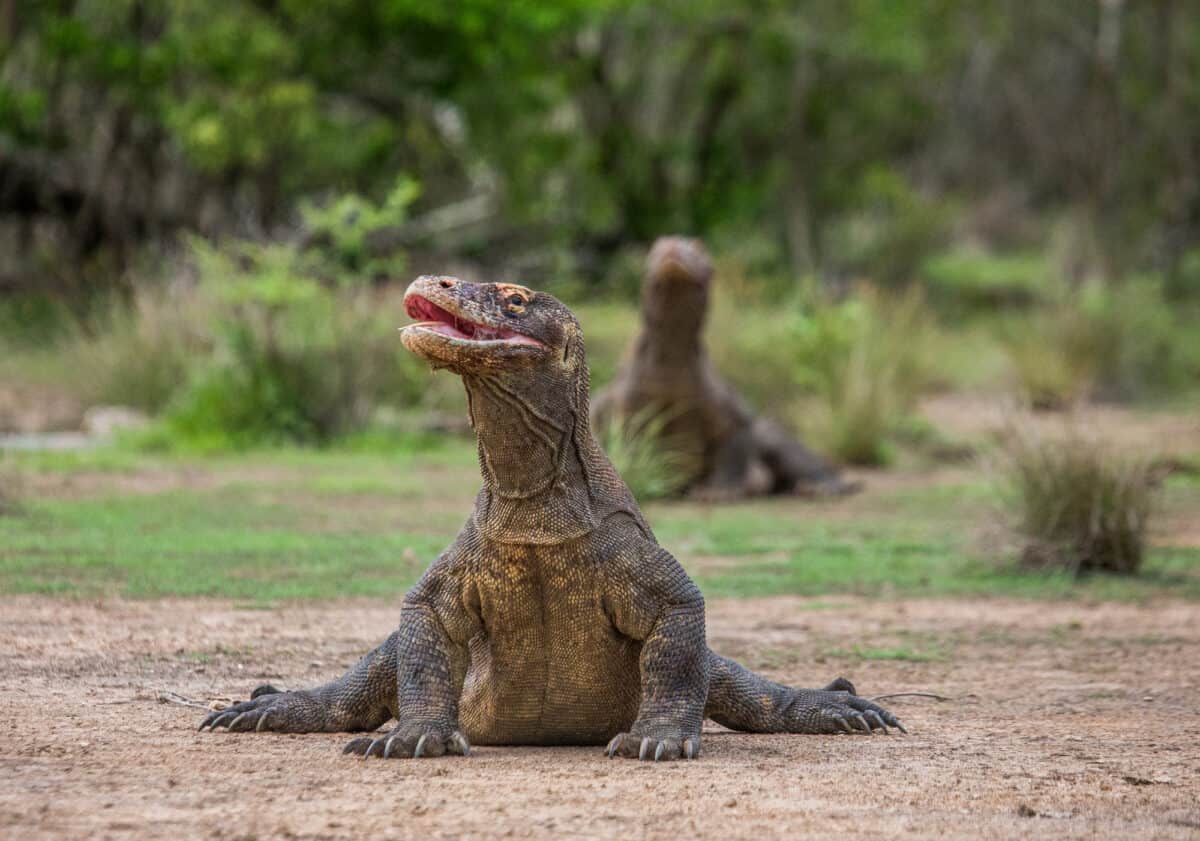
Komodo Dragons are the largest living lizards, with adult males typically reaching lengths of 8 to 10 feet and weighing up to 200 pounds. These giants of the reptile world strike an imposing figure in their natural habitat.
Powerful Jaws
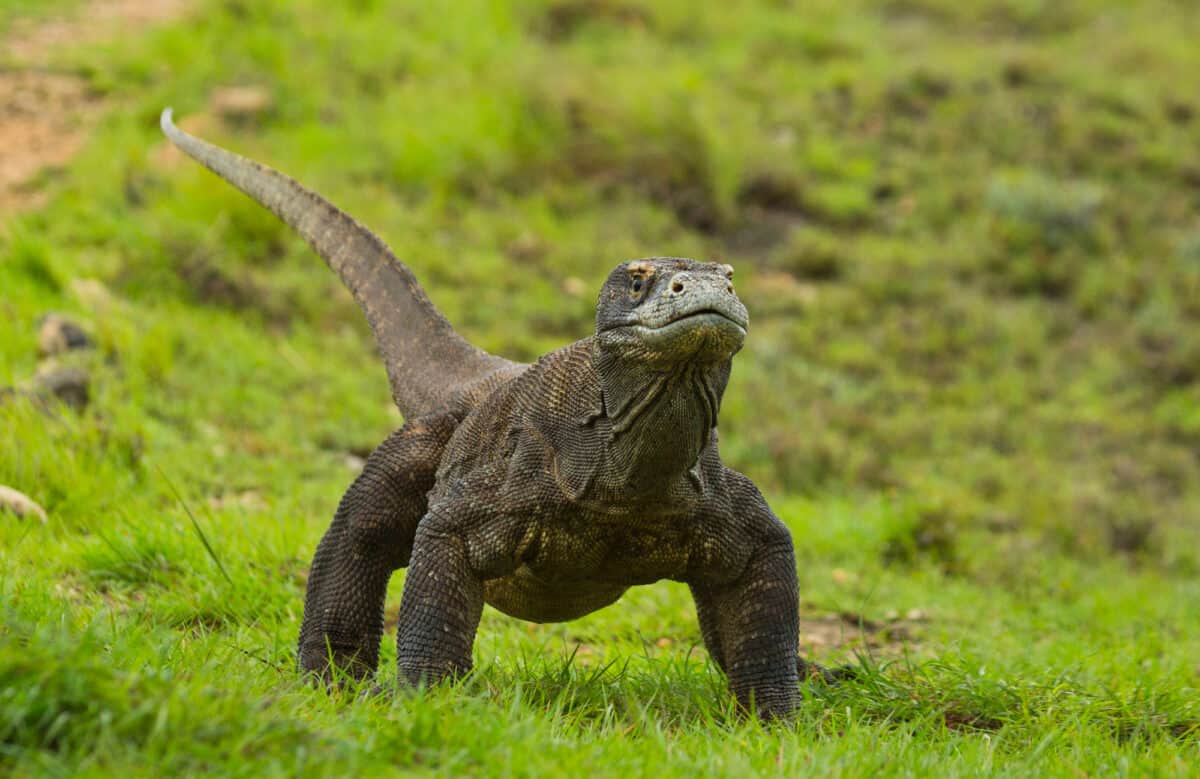
The Komodo Dragon’s jaws are armed with sharp, serrated teeth capable of tearing through flesh and bone with ease. Their bite is incredibly powerful, delivering a potent cocktail of bacteria that can cause deadly infections in their prey.
Stout Body
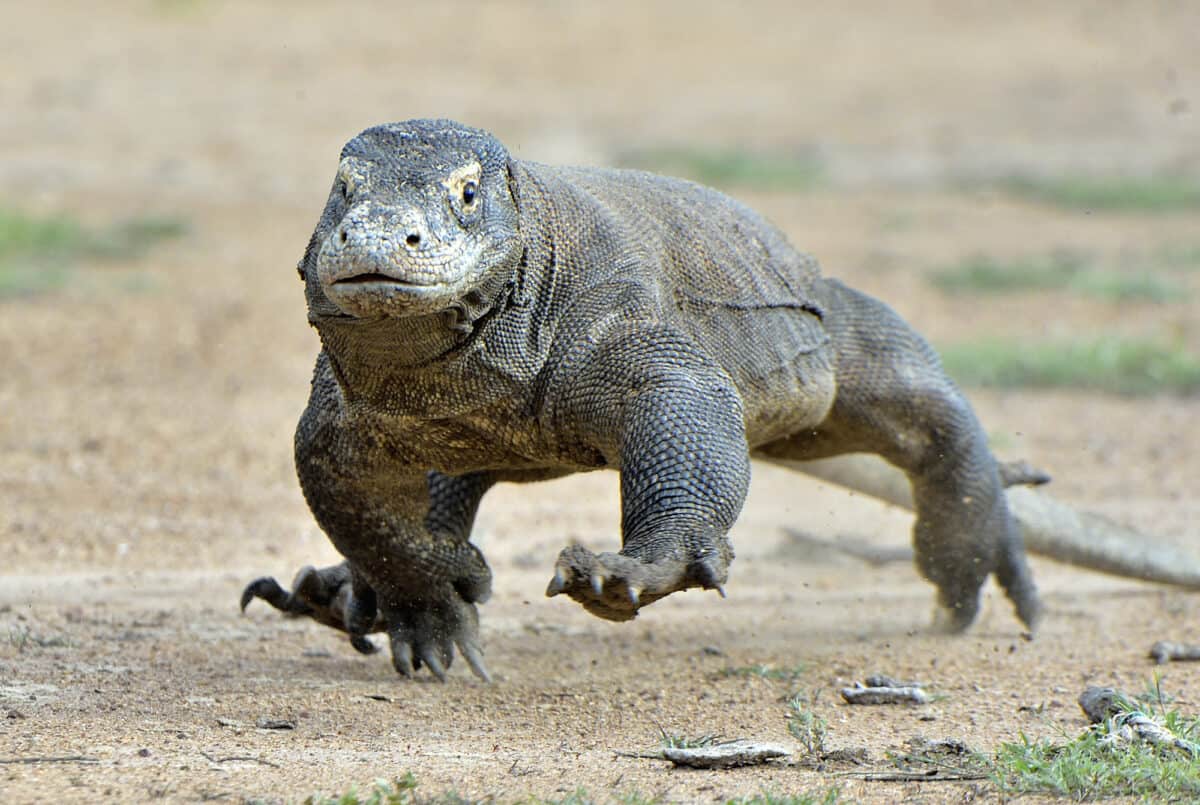
They have robust bodies covered in tough, armored scales that provide protection against potential threats and harsh environmental conditions. Their sturdy build allows them to tackle large prey and withstand physical confrontations with rivals.
Forked Tongue
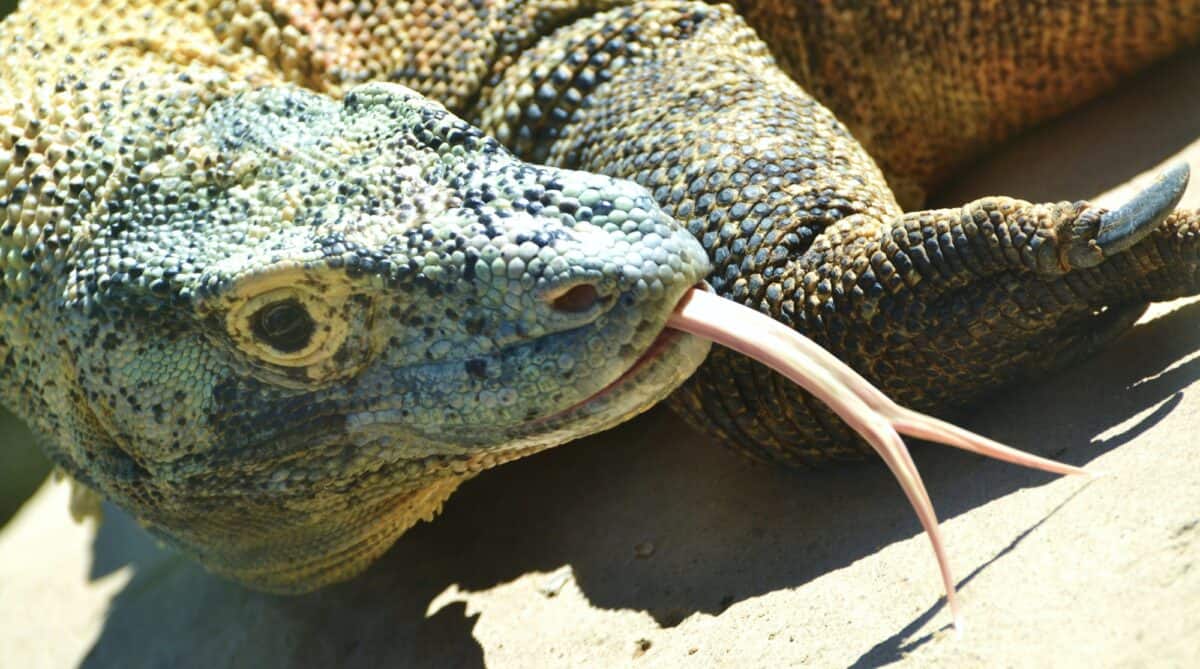
Like other reptiles, Komodo Dragons possess a forked tongue that they use to detect scent particles in the air. This keen sense of smell helps them locate prey from great distances and navigate their surroundings with precision.
Sharp Claws
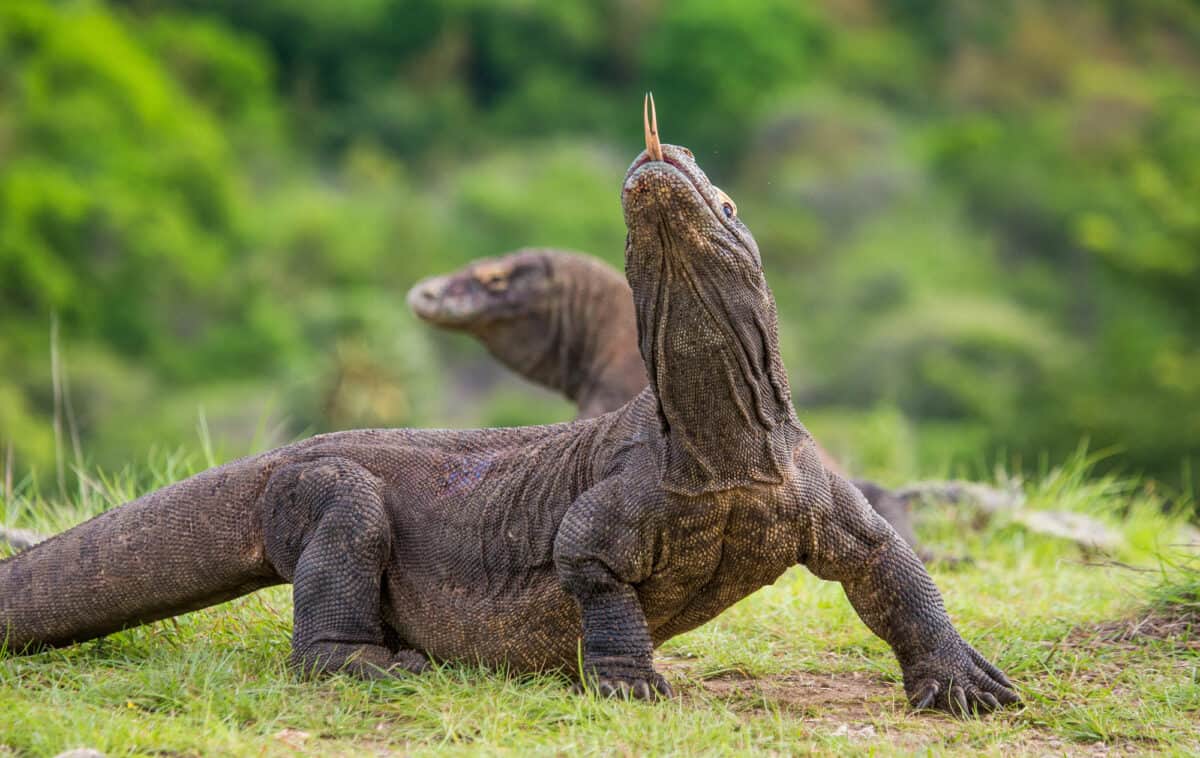
Their long, sharp claws are formidable weapons used for grasping, climbing, and digging. These adaptations enable Komodo Dragons to capture prey, defend themselves, and construct burrows for shelter and nesting.
Excellent Vision
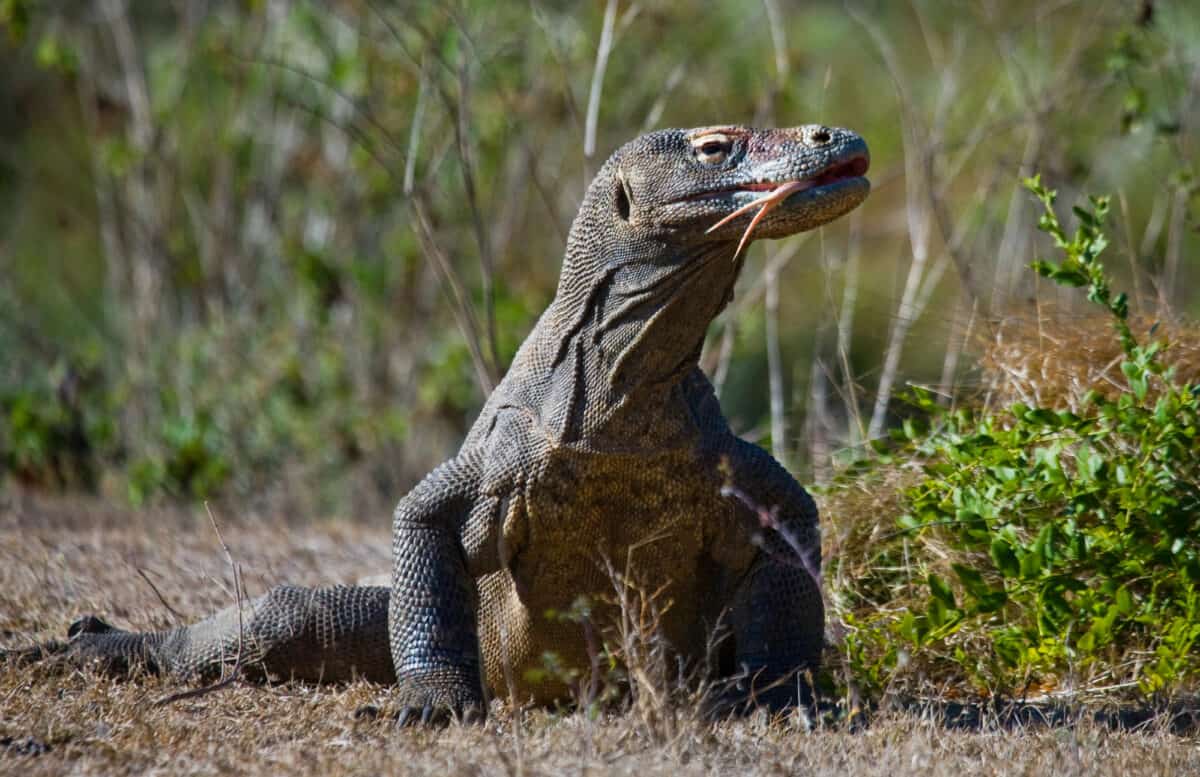
Komodo Dragons have excellent vision, allowing them to spot movement and detect potential threats or prey from afar. Their keen eyesight, combined with their acute sense of smell, makes them highly efficient hunters.
Powerful Tail
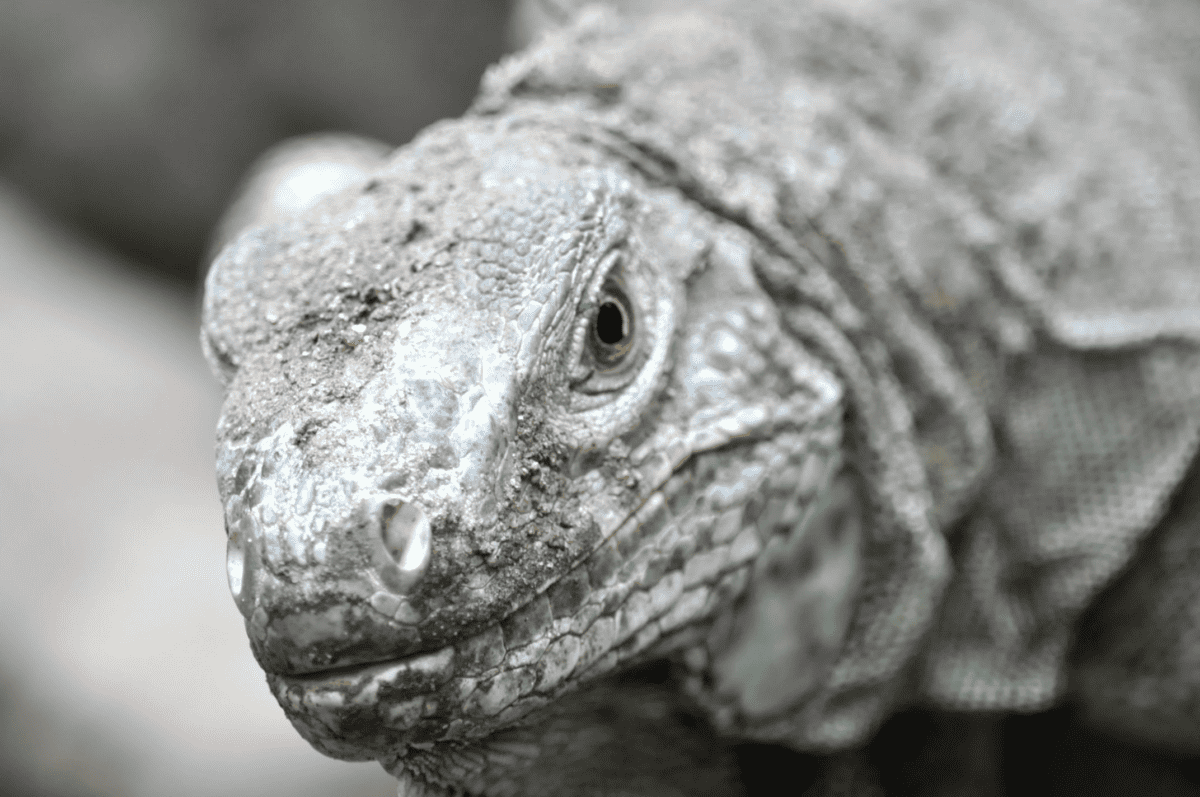
Their muscular tails serve multiple purposes, providing balance, propulsion, and defense. Komodo Dragons can deliver powerful strikes with their tails, capable of knocking down prey or warding off rivals.
Camouflaged Coloration
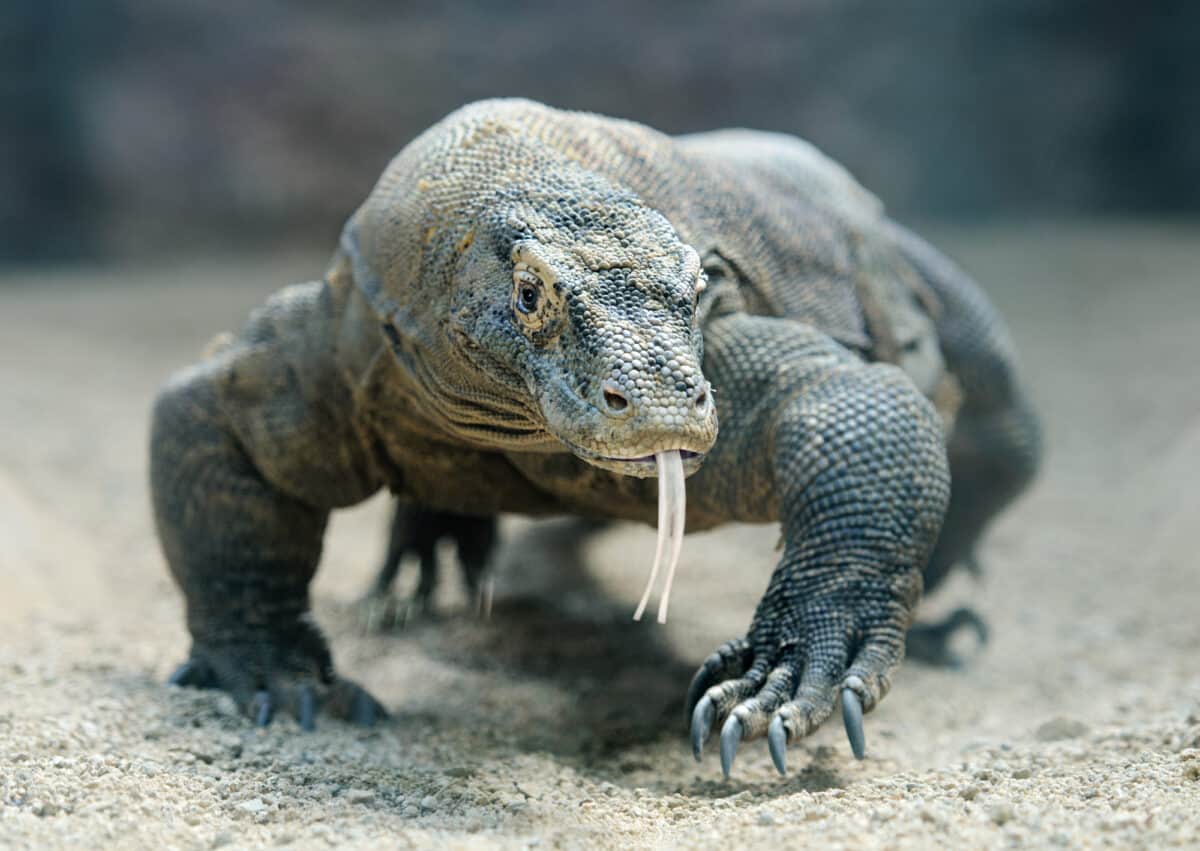
Their mottled gray, brown, and green coloration allows Komodo Dragons to blend seamlessly into their surroundings, making them difficult to spot for both prey and predators alike.
Thermal Sensing Abilities
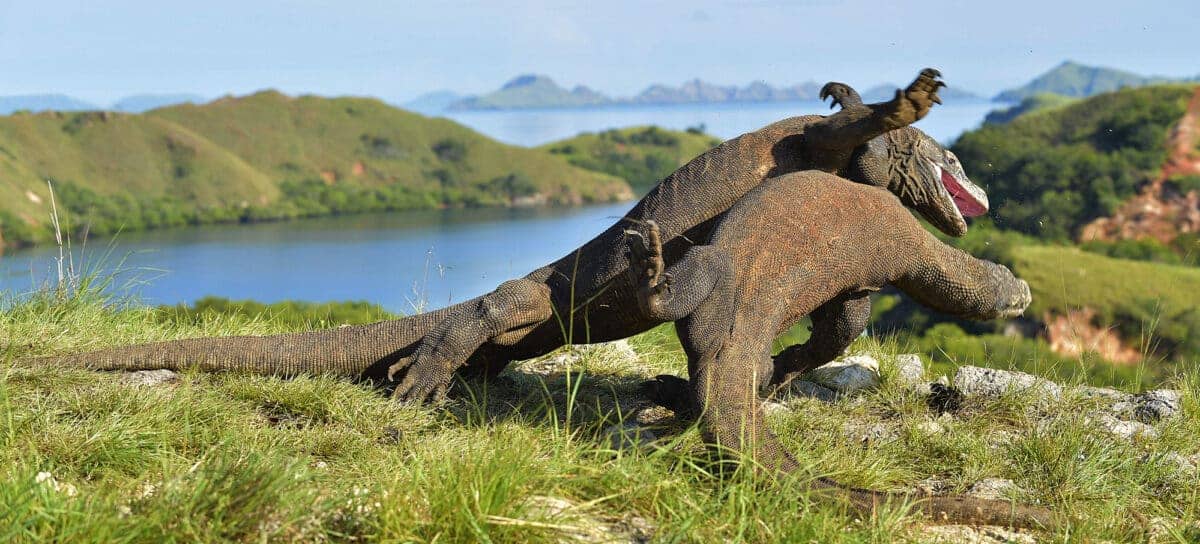
Komodo Dragons possess specialized sensory organs called “pits” located on their lower jaws, which enable them to detect heat emitted by warm-blooded animals. This thermal sensing ability helps them locate prey, even in darkness or dense vegetation.
Long Lifespan
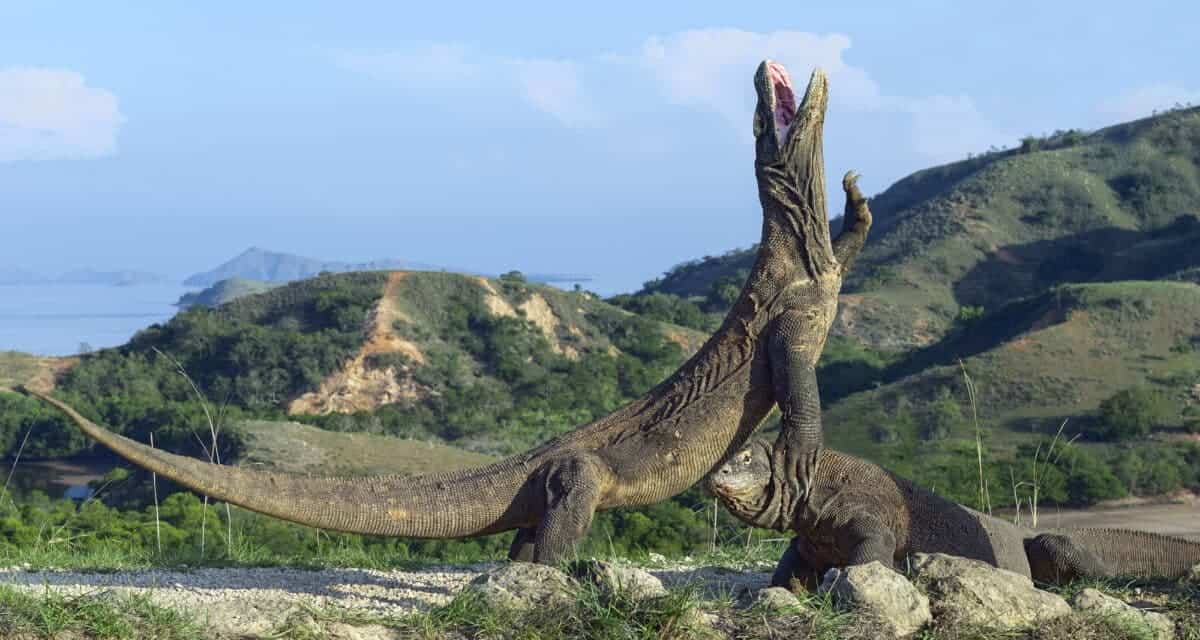
In captivity, Komodo Dragons can live for several decades, with some individuals reaching 30 years of age or more. In the wild, their lifespan is shorter due to various factors such as predation, disease, and competition for resources.
Know that we understand the physical characteristics we can move onto the behavioral traits of the Komodo Dragon…
Solitary Nature
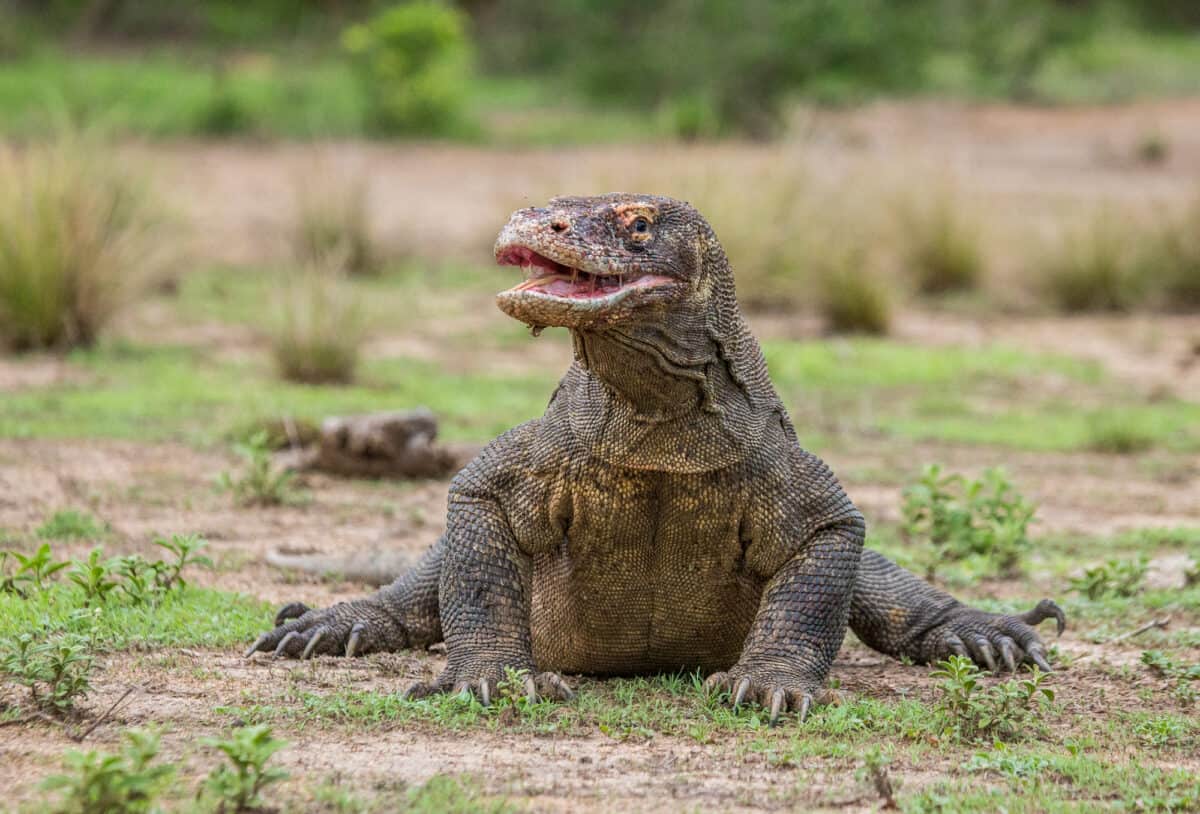
Komodo Dragons are primarily solitary animals, preferring to hunt and forage alone. They are territorial creatures, marking their territories with scent and engaging in aggressive displays to deter intruders.
Ambush Predators
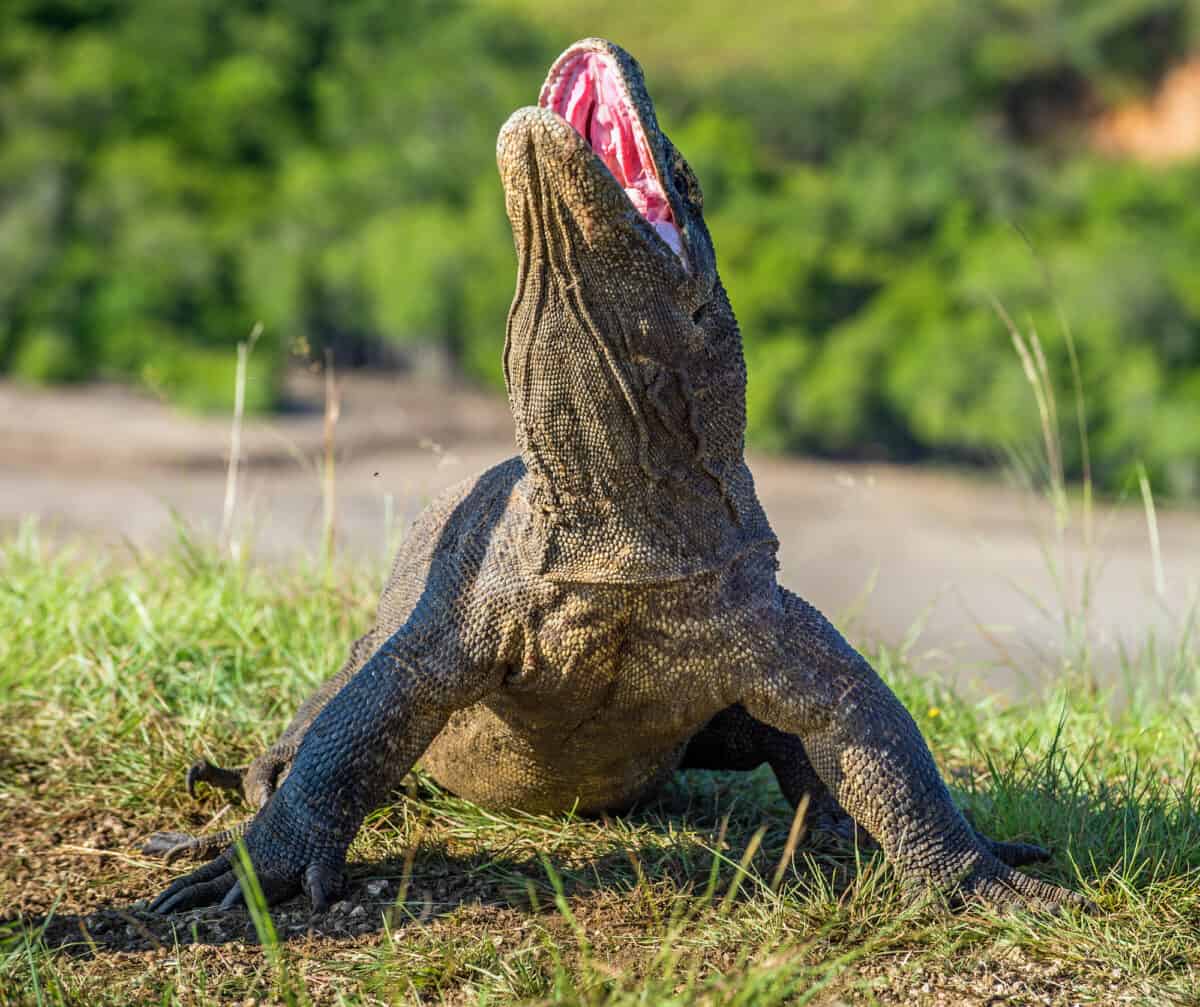
They are ambush predators, lying in wait for unsuspecting prey to pass by before launching a sudden, decisive attack. Their patient stalking behavior allows them to conserve energy while maximizing their chances of success.
Cannibalistic Tendencies
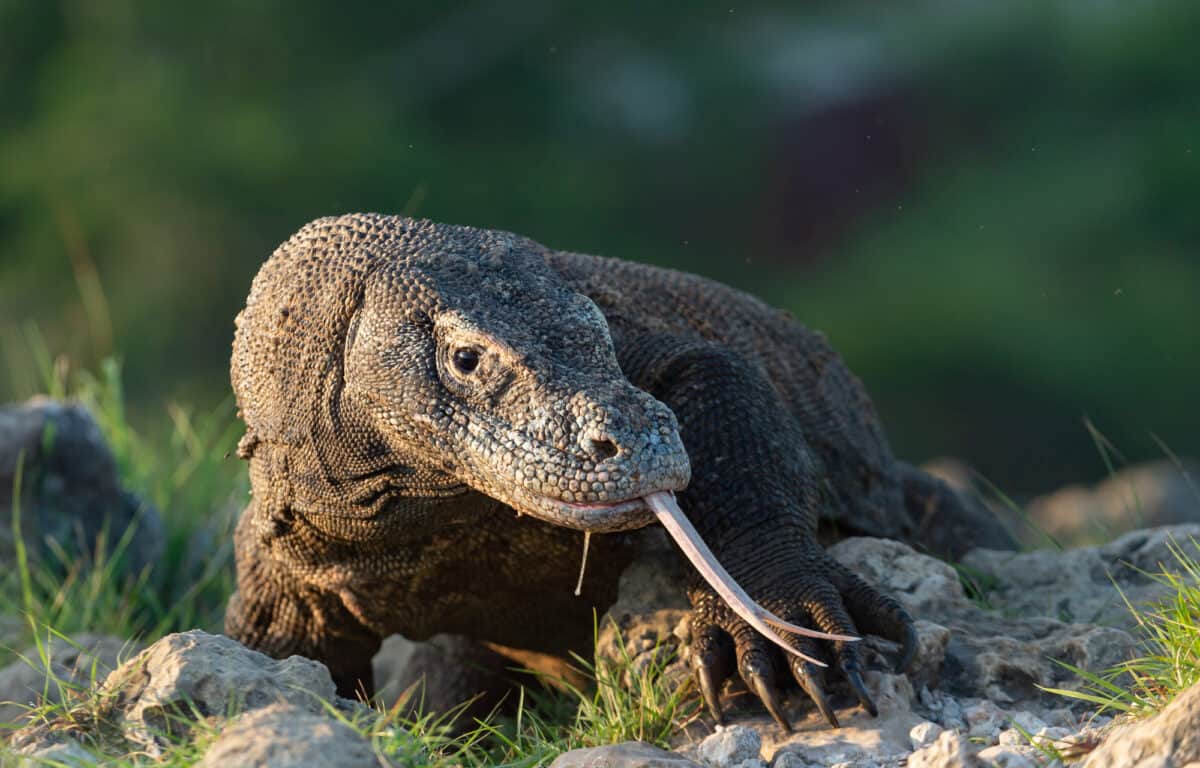
Komodo Dragons are known to exhibit cannibalistic behavior, with larger individuals sometimes preying on smaller ones, including juveniles. This behavior may help regulate population densities and prevent overcrowding in their habitat.
Opportunistic Feeding Habits
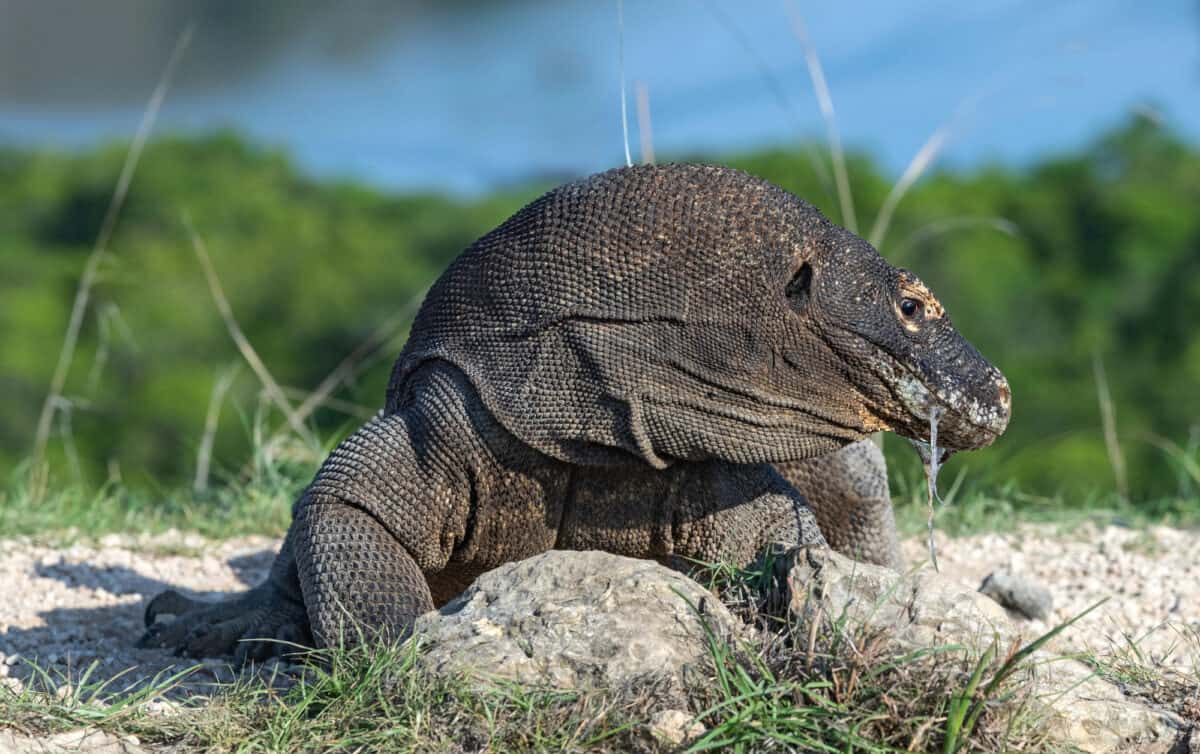
While they primarily hunt live prey, Komodo Dragons are opportunistic feeders, scavenging on carrion and leftovers whenever the opportunity arises. Their versatile diet allows them to thrive in diverse environments with fluctuating food availability.
Territorial Displays
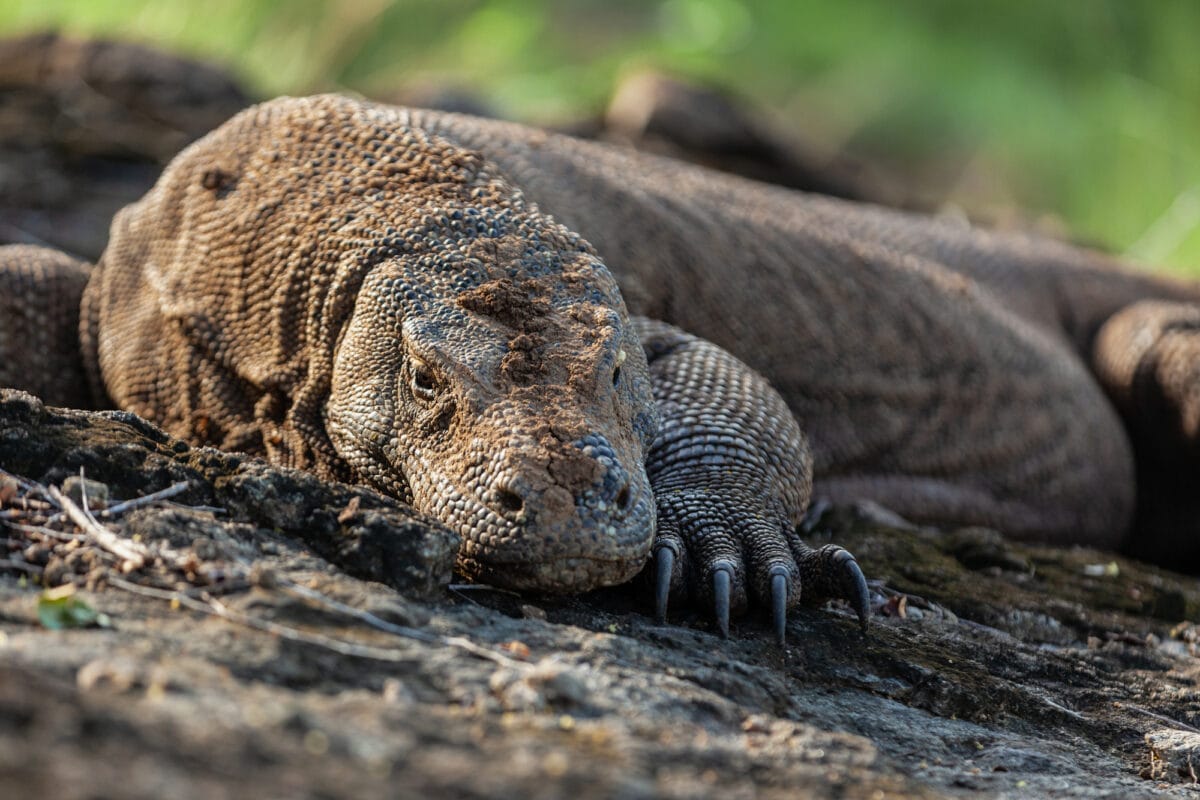
Komodo Dragons engage in elaborate territorial displays to assert dominance and establish boundaries within their habitat. These displays may include vocalizations, head-bobbing, and aggressive posturing to intimidate rivals and maintain control over resources.
Parental Care
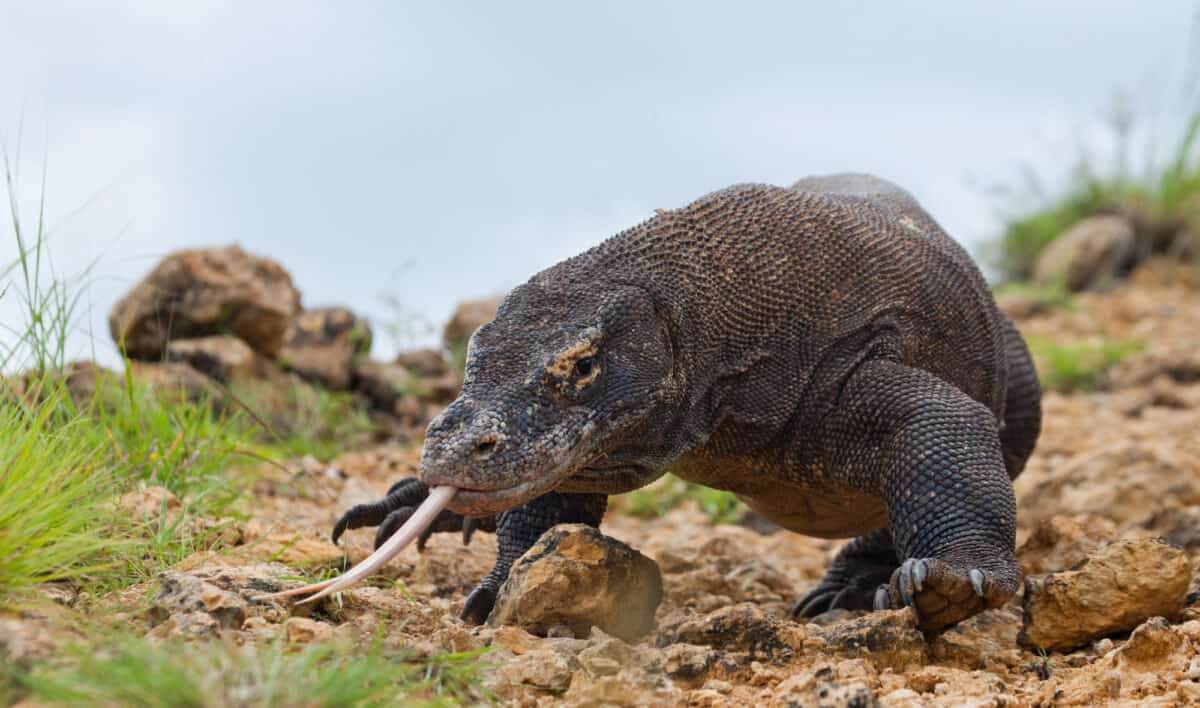
Female Komodo Dragons exhibit maternal instincts, excavating nests and laying clutches of eggs in sandy soil or decaying vegetation. They guard their nests vigilantly until the eggs hatch, protecting them from predators and environmental threats.
Vocalizations
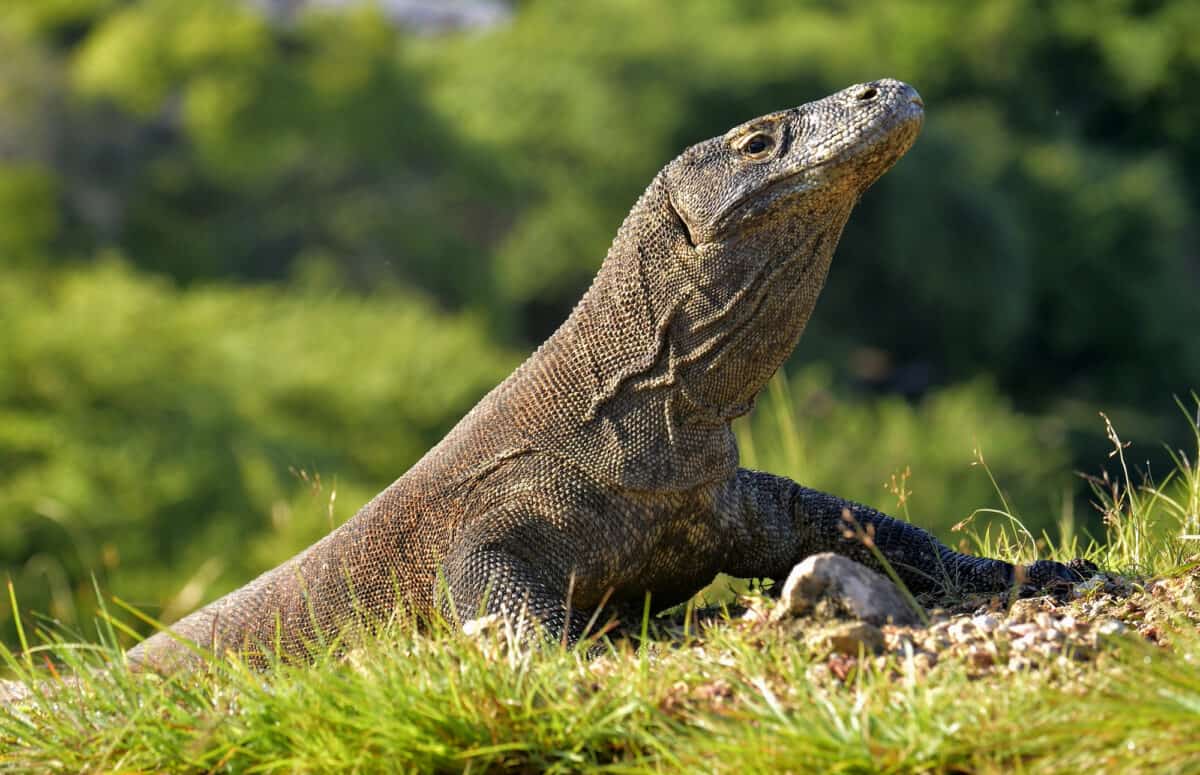
Komodo Dragons communicate with each other using a variety of vocalizations, including hisses, growls, and bellows. These vocal signals convey information about their intentions, territorial boundaries, and reproductive status.
Social Hierarchy
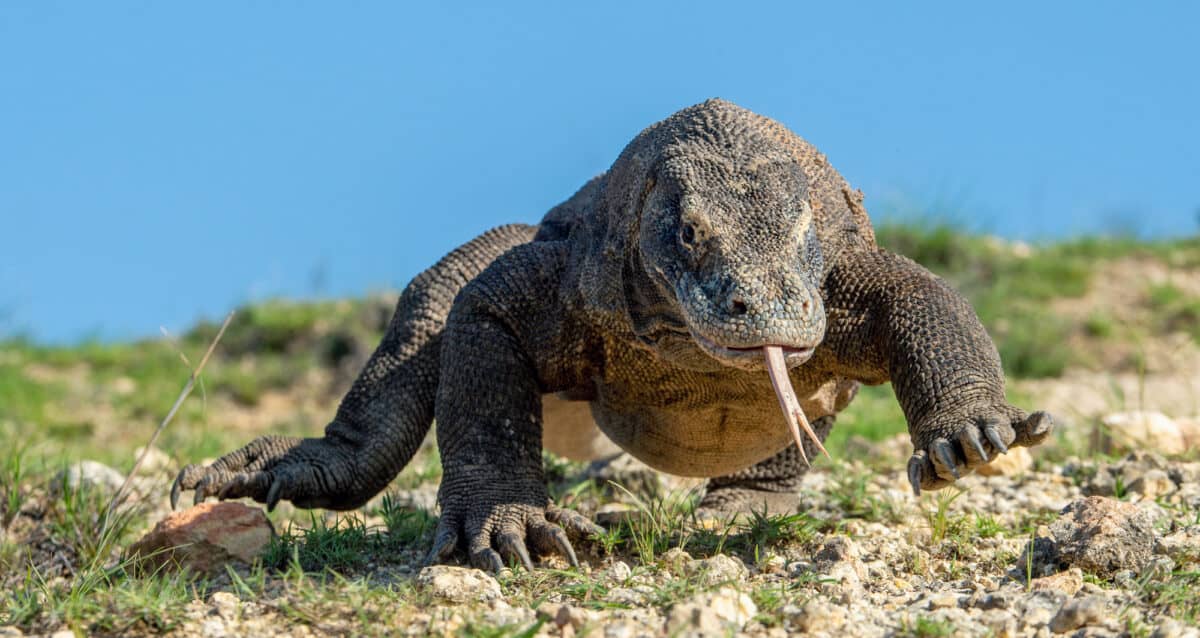
Komodo Dragons establish social hierarchies within their populations, with dominant individuals asserting control over access to food, mating opportunities, and prime territory. These hierarchies are maintained through ritualized displays and occasional physical confrontations.
Thermoregulation Behavior
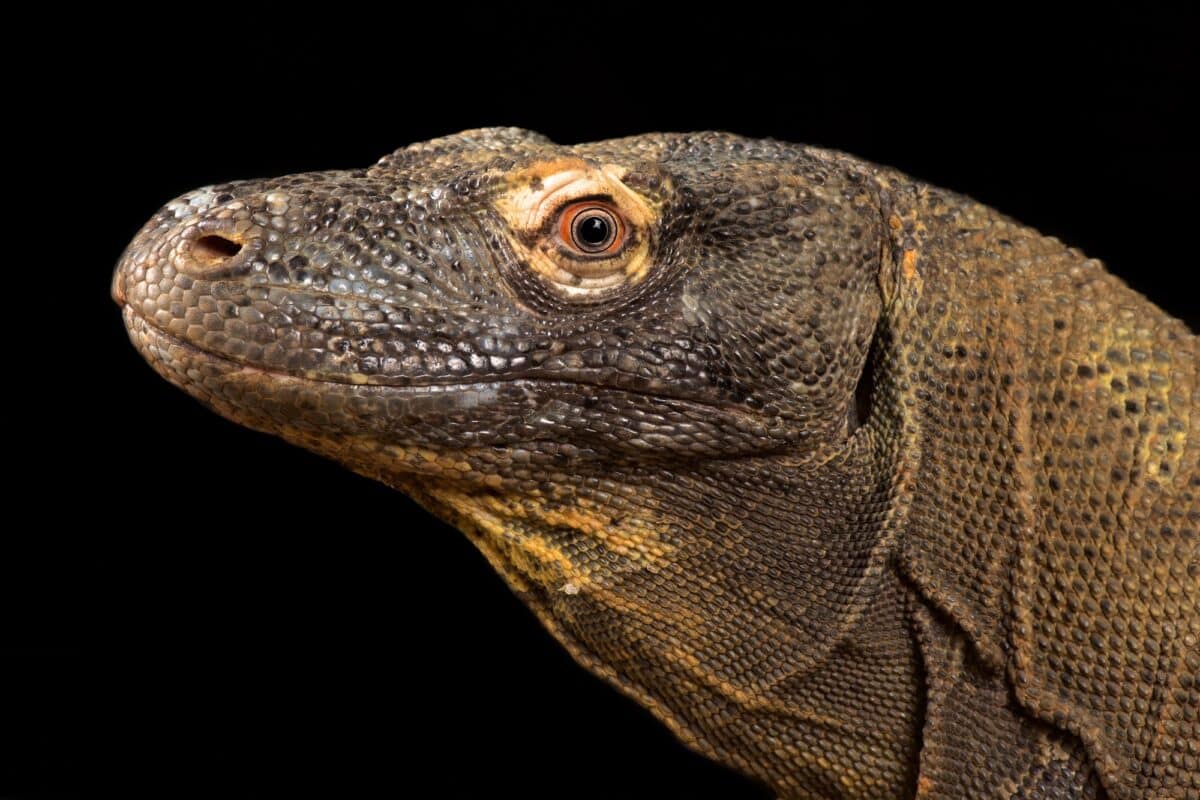
Like all reptiles, Komodo Dragons rely on external sources of heat to regulate their body temperature. They bask in the sun to warm up and seek shade or water to cool down, maintaining an optimal body temperature for metabolic function and activity.
Wrap Up
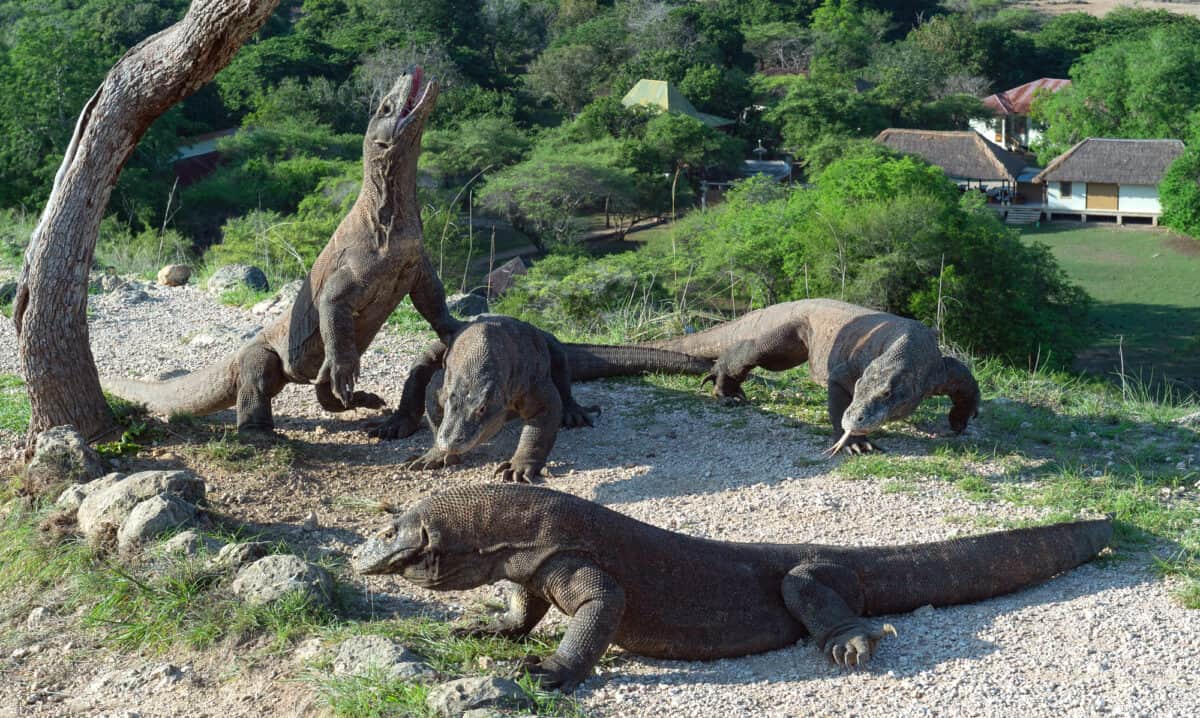
The Komodo Dragon is a marvel of evolution, boasting an impressive array of physical adaptations and behavioral traits that enable it to thrive in its harsh and competitive environment. From its formidable size and strength to its cunning hunting tactics and complex social dynamics, the Komodo Dragon exemplifies the power and resilience of nature’s most remarkable creations. As we witness the awe-inspiring spectacle of a Komodo Dragon devouring a shark alive, let us marvel at the wonders of the natural world and the extraordinary creatures that inhabit it.
Thanks for reading along! For more, check out the article link below.
Next up:
- Jack Russell Learns How To Fly - April 26, 2024
- Watch: Never Approach A Bison in Yellowstone National Park - April 26, 2024
- Watch: Lizard Greets Man like a Dog! - April 25, 2024

